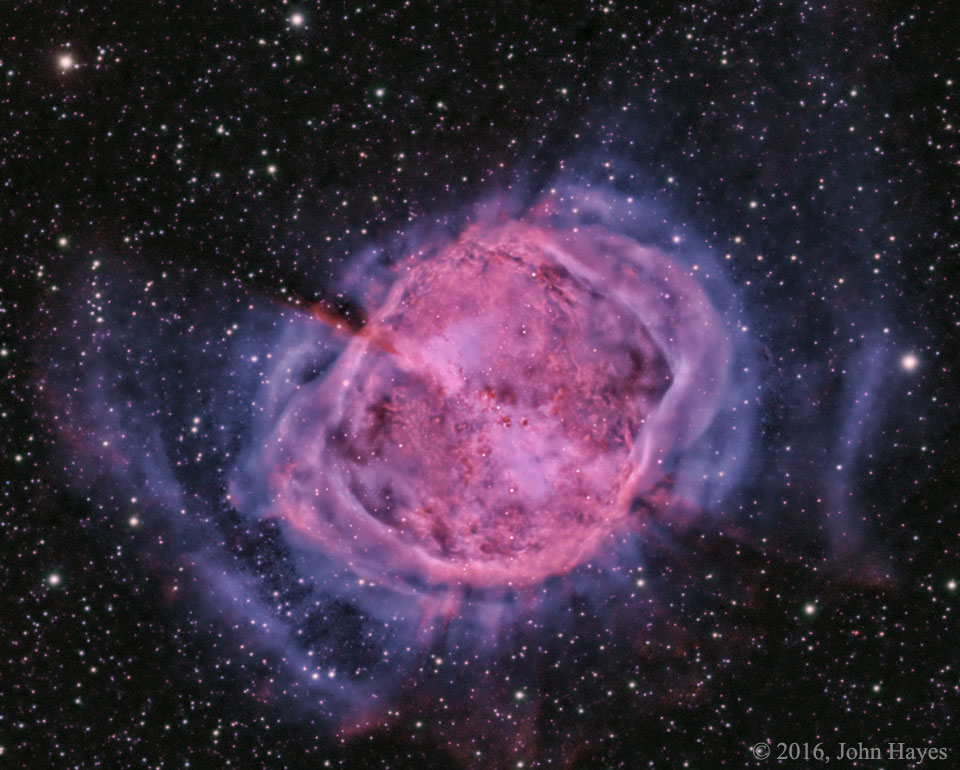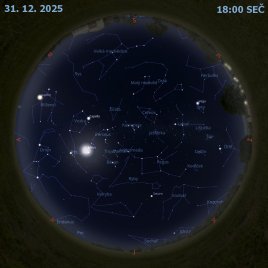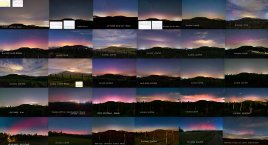M27: Mlhovina Činka

Uznání a copyright: John Hayes
První náznak, co se stane s naším Sluncem, byl bezděčně objeven v roce 1764. Tu dobu Charles Messier zpracovával seznam difuzních objektů, které by se neměly plést s kometami. Dvacátý sedmý objekt v Messierově seznamu, nyní znám jako M27 nebo mlhovina Činka, je planetární mlhovina, což je typ mlhoviny, který vytvoří naše Slunce, až v jeho nitru utichne jaderná fúze. M27 je jednou z nejjasnějších planetárních mlhovin na obloze a lze ji vidět triedrem v souhvězdí Lištičky (Vulpecula). M27 je nahoře vidět v barvách emitovaných vodíkem a kyslíkem, a světlu to k nám z M27 trvá 1000 let. Pochopení fyziky a významu M27 bylo ovšem zcela mimo vědu 18. století. Ještě dnes o bipolárních planetárních mlhovinách jako je M27 zůstává mnoho věcí tajemných, včetně fyzikálního mechanismu, který vyvrhuje vnější plynové obálky z hvězd o nízké hmotnosti a zanechává rentgenové žhavé bílé trpaslíky.
NASA Official: Phillip Newman Specific rights apply. NASA Web Privacy Policy and Important Notices
A service of: ASD at NASA / GSFC & Michigan Tech. U.
Odkaz na originální APOD


